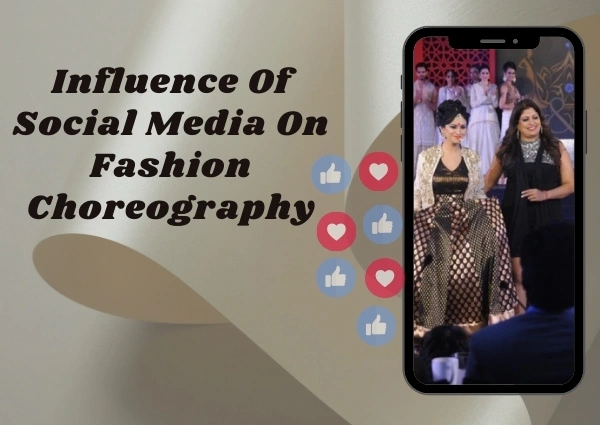
25 Jun Influence Of Social Media On Fashion Choreography
In the dynamic world of fashion, choreography plays a crucial role in bringing runway shows to life, transforming garments into a moving spectacle. With the advent of social media, the landscape of fashion choreography has been revolutionized, offering new opportunities, challenges, and creative avenues for choreographers and designers alike. This blog explores the profound influence of social media on fashion choreography, highlighting its impact on creativity, reach, and industry trends.
1. Expanded Reach And Accessibility
Social media platforms like Instagram, TikTok, and YouTube have democratized fashion choreography, making it accessible to a global audience. Choreographers and fashion houses can now showcase their work to millions of people worldwide with just a few clicks. This expanded reach has led to increased visibility for choreographers, allowing them to build personal brands and attract collaborations beyond traditional fashion shows.
2. Real-Time Feedback And Interaction
One of the most significant advantages of social media is the ability to receive real-time feedback. Fashion choreographers can instantly gauge public reaction to their work through likes, comments, and shares. This immediate interaction allows for a more responsive and adaptive approach to choreography, enabling professionals to refine their craft based on audience preferences and trends.
3. Creative Inspiration And Trends
Social media serves as a vast repository of creative inspiration. Platforms like Pinterest and Instagram are brimming with images and videos of dance routines, fashion shows, and innovative choreography. Choreographers can draw inspiration from this content, incorporating new styles and techniques into their work. Additionally, social media trends often influence fashion choreography, with viral dances and movements finding their way onto the runway.
4. Collaborative Opportunities
Social media fosters collaboration between fashion choreographers, designers, models, and influencers. Choreographers can connect with other industry professionals, share ideas, and co-create content. Influencers, with their massive followings, can help amplify the reach of fashion shows and choreography, creating a symbiotic relationship that benefits both parties. These collaborations often lead to unique and memorable fashion presentations that resonate with diverse audiences.
5. Educational Resources And Learning
For aspiring fashion choreographers, social media is an invaluable educational resource. Platforms like YouTube offer tutorials, behind-the-scenes footage, and interviews with industry experts. Aspiring professionals can learn from established choreographers, gaining insights into the techniques and processes involved in fashion choreography. This accessibility to knowledge helps nurture the next generation of talent in the industry.
6. Marketing And Promotion
Social media has become an essential marketing tool for fashion choreographers. Through strategic use of hashtags, engaging content, and partnerships with influencers, choreographers can promote their work and reach a broader audience. Instagram Stories, Reels, and YouTube shorts videos are particularly effective for showcasing short, impactful choreography segments that captivate viewers and drive engagement.
7. Cultural Exchange And Diversity
Social media facilitates cultural exchange, allowing choreographers to explore and incorporate diverse dance styles and cultural elements into their work. This exposure to different cultures enriches fashion choreography, making it more inclusive and representative of global artistic expressions. Choreographers can celebrate cultural diversity, breaking down barriers and fostering a more interconnected fashion community.
8. Challenges And Considerations
While social media offers numerous benefits, it also presents challenges for fashion choreographers. The pressure to create content that garners likes and shares can sometimes compromise artistic integrity. Additionally, the fast-paced nature of social media trends requires choreographers to constantly innovate, which can be both exciting and demanding. Maintaining a balance between creative expression and audience expectations is crucial in navigating the social media landscape.
The influence of social media on fashion choreography is undeniable, transforming the way choreographers create, share, and engage with their work. By expanding reach, fostering collaboration, and providing a platform for creative inspiration, social media has opened up new possibilities for fashion choreography. As the industry continues to evolve, choreographers who embrace social media’s potential while staying true to their artistic vision will thrive in this dynamic and ever-changing landscape.

No Comments